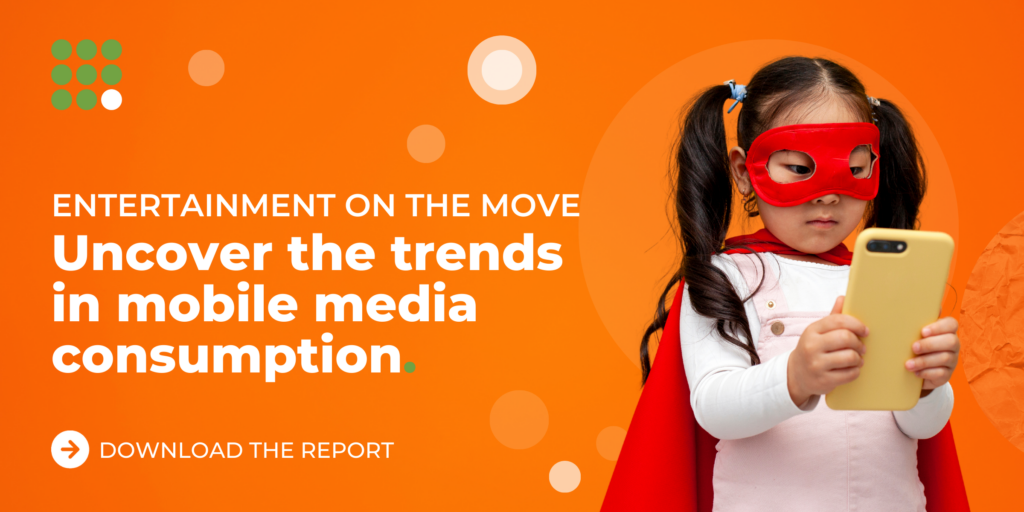Brands face more pressure than ever to align with the movements shaping society. Whether it’s the climate-driven #SaveOurOceans or the cultural shift highlighted by #WorkplaceWellness, trending hashtags have become a gateway for companies to join global conversations.
Brands like Patagonia and Lush have effectively tapped into these conversations, bolstering their reputations by showing real commitment to the causes they support. However, many others find themselves misstepping, as jumping into a trending movement without a clear alignment to brand values can lead to accusations of “woke-washing” or performative activism.
Simply posting a hashtag is no longer enough. Consumers today expect brands to back up their words with meaningful action.
64% of consumers globally expect brands to take a stand on societal issues, with meaningful action beyond just statements.
Edelman Trust Barometer 2022
The Rise of Hashtag Activism in Consumer Behavior
Hashtag movements have evolved from simple social media trends into powerful forces that shape consumer behaviour and expectations globally. What started as a way for individuals to voice their concerns has become a tool for driving change across industries. Consumers today are watching how brands respond to these movements and expecting them to take meaningful action. In recent times, this expectation has only intensified, with consumers looking for authentic engagement rather than performative gestures.
Take the #KuToo movement in Japan, which called for an end to mandatory high heels in the workplace. It sparked national conversations on gender equality and workplace rights, with brands forced to reconsider their own policies around dress codes.
Image credit: Deviantart
In Latin America, the #NiUnaMenos movement against gender-based violence has influenced corporate behaviour, pressuring brands to address issues of safety and equality in their messaging and operations.
Globally, the #HeForShe campaign gained traction quickly, pushing for gender equality initiatives that include male allyship and encouraging companies to reevaluate their diversity and inclusion strategies.
These movements, and others like them, have changed the business landscape. Consumers now expect brands to be aligned with the social causes that matter most to them, not just in their home countries but on a global level. The result? There is a growing demand for brands to be transparent, proactive, and genuinely committed to the values they claim to uphold. Simply put, hashtag activism is no longer a trend—it’s a key driver of consumer behaviour that brands must take seriously.
| Hashtag | Amplification | Region | Impact |
| #MeToo | 19 million tweets in the first year (global) | Global | Sparked a global conversation about sexual harassment and assault, leading to legal reforms and changes in workplace culture. |
| #BlackLivesMatter | 47.8 million tweets in 2020 alone (US and global) | US/Global | Catalysed a global movement for racial equality, influencing corporate diversity initiatives and marketing strategies. |
| #ThisGirlCan | Over 11 million women engaged via media platforms (UK) | UK | Encouraged women’s participation in sports, promoting positive body image and inclusivity in fitness marketing. |
| #HeForShe | 3 billion social media impressions worldwide | Global | Pushed for gender equality, with some companies adopting diversity initiatives and male allyship programs. |
| #BalanceTonPorc | Millions of tweets in France | France | Prompted corporate and legal reforms addressing workplace harassment in industries like entertainment and fashion. |
| #KuToo | Over 150,000 signatures on change.org and thousands of tweets (Japan) | Japan | Highlighted the demand for workplace equality in Japan, particularly regarding restrictive dress codes. |
| #NiUnaMenos | 20 million social media posts | Latin America | Raised awareness of femicide and violence against women, influencing political discourse and marketing strategies around women’s safety. |
| #BringBackOurGirls | Over 4 million tweets in the first three weeks (global) | Nigeria/Global | Focused on the safety and education of kidnapped Nigerian schoolgirls, driving support from global brands and activists. |
| #WhyLoiter | Tens of thousands of social media posts | India | Sparked conversations about women’s rights to public spaces, pushing brands to address urban design and safety for women. |
| #StopAsianHate | 7.5 million engagements on Instagram alone | US/Global | Raised awareness of violence against Asian communities, prompting brands to emphasise diversity and anti-racism efforts. |
| #SaveOurOceans | Over 5 million engagements in 2023 alone | Global | Mobilised environmental advocacy, with brands in the fashion and beauty industries adopting sustainable practices and reducing plastic use. |
| #ClimateStrike | 10 million engagements during global strike events | Global | Pressured companies and governments to take action on climate change, influencing industries from energy to apparel. |
| #WorkplaceWellness | 3 million social media posts and growing | Global | Encouraged conversations about mental health and employee well-being, leading brands to revisit workplace policies and benefits. |
When Brands Should Engage with Hashtag Activism
Brands should engage with hashtag activism when their core values align with the movement or when they have a history of supporting similar causes. Authenticity is critical—consumers can quickly identify whether a brand’s participation is genuine or opportunistic. A strong, values-driven connection to a cause allows a brand to engage in a way that resonates with its audience, strengthens its reputation, and builds trust over time.
Image credit: Nike
Nike provides a powerful example of how to engage meaningfully with hashtag activism. Its support for the #BlackLivesMatter movement, most notably through its campaign featuring Colin Kaepernick, was seen as authentic because it aligned with Nike’s long-standing commitment to social justice and equality. This wasn’t a one-time gesture—Nike had previously supported various diversity initiatives and remained vocal on issues of race and justice. Their involvement in #BLM was a natural extension of their brand identity, and it resonated deeply with consumers who valued their bold stance.
Image credit: Ben & Jerry’s
Similarly, Ben & Jerry’s has established itself as a brand that consistently speaks out on social issues. The company has a long history of activism, particularly around issues like climate change, LGBTQ+ rights, and racial justice. When Ben & Jerry’s engaged in the #BlackLivesMatter movement, it was viewed as authentic because of its ongoing commitment to social justice. Their involvement went beyond social media posts—they released a detailed plan outlining how they would support racial equity, showing that their activism was rooted in real, long-term action.
66% of consumers who feel a brand’s social impact is authentic are likely to purchase from that brand.
Sprout Social Index, Edition XVII: US & UK Consumers
In both cases, these brands successfully engaged with hashtag activism because they acted according to their established values. They weren’t jumping on a trend for visibility; they were contributing to causes that had long been part of their brand identity. For other brands, the lesson is clear: engage when you genuinely connect to the cause, and make sure your actions back up your words.
When Brands Should Avoid Hashtag Activism
While engaging in hashtag activism can elevate a brand’s reputation, there are instances where companies should remain silent. If a brand lacks a history of supporting the cause or appears performative, jumping into a trending conversation can backfire. In these cases, consumers are quick to call out inauthenticity, which can lead to reputational damage and public backlash.
Image credit: Pepsi
One of the most infamous examples is Pepsi’s 2017 ad featuring Kendall Jenner. The ad attempted to tap into the global conversation around protests and social justice, but it was widely criticized for trivialising the serious nature of these movements. By portraying protests as something that could be “solved” with a can of soda, Pepsi came across as tone-deaf and opportunistic. The company had no previous track record of supporting the causes it was trying to reference, making the ad feel disingenuous and disconnected from the real issues at hand.
Similarly, some brands that engaged with the #BlackLivesMatter or #MeToo movements were called out for hypocrisy. Despite releasing statements of support, many of these companies were criticized for lacking diversity within their leadership teams or failing to take meaningful action. Consumers were quick to point out that issuing statements or posting on social media without internal reforms or real commitment to the cause is performative activism. In these cases, brands appeared to capitalise on a trending issue without aligning their actions with their messaging.
For brands, the takeaway is clear: if you don’t have a genuine connection to the cause or a history of supporting it, it’s better to stay silent. Engaging in hashtag activism purely for visibility, without backing it up with real action, risks alienating your audience and doing more harm than good.
Global Examples: What Worked and What Didn’t
Hashtag activism doesn’t operate in isolation—it plays out differently across cultures and regions. While some brands have successfully engaged in these global movements, others have faltered, often because their actions didn’t align with the values they publicly supported. Here are examples of what worked and what didn’t on the global stage.
Success Stories:
Image credit: CampaignLive
- #ThisGirlCan (UK): This movement, spearheaded by Sport England, encouraged women to embrace physical activity without the fear of judgment. Brands that aligned with this campaign, like Nike and Reebok, promoted body positivity and inclusivity in fitness. By championing this cause, these brands successfully resonated with their audiences, aligning their messages with a growing movement of women seeking empowerment through sports. The success was rooted in the authenticity of the campaign’s message, backed by long-term initiatives to support women’s health and fitness.
Image credit: New York Post
- #BringBackOurGirls (Nigeria): The global outcry over the abduction of schoolgirls in Nigeria led to the #BringBackOurGirls movement, which received international attention. Brands in education and tech—like Microsoft—contributed meaningfully by providing resources and advocacy around girls’ education and safety. Their involvement went beyond social media posts, offering real solutions that addressed the underlying issue, showing how brands can support causes through meaningful engagement rather than just rhetoric.
Failures:
- #KuToo (Japan): This movement highlighted the unfair expectation for women to wear high heels in the workplace, was a significant conversation in Japan around gender equality. However, some brands that attempted to engage with the movement faced backlash when their workplace policies didn’t align with the movement’s call for change. For example, companies that continued enforcing strict dress codes were criticized for hypocrisy. This illustrates the dangers of engaging with hashtag activism when internal practices don’t reflect the values being promoted.
- #HeForShe (Global): While this global movement for gender equality, spearheaded by the United Nations, gained widespread attention, not all brands that joined the conversation contributed meaningfully. Several companies publicly supporting the movement were criticized for failing to invest in real change, such as implementing policies promoting male allyship or truly fostering workplace equality. Their participation felt more like an empty gesture than a genuine commitment to advancing gender equality, ultimately damaging their credibility.
These examples show that successful engagement in hashtag activism requires more than just participation—it requires a deep understanding of the cause, long-term commitment, and alignment between a brand’s public messaging and internal actions.
Roadmap for Brands: Engaging in Hashtag Activism Responsibly
Successfully navigating hashtag activism requires a clear strategy rooted in authenticity and long-term commitment. Here’s a step-by-step roadmap for brands to engage responsibly:
Step 1: Align with Your Values
Before jumping into a trending movement, assess whether the cause truly aligns with your brand’s core values. Hashtag activism isn’t about chasing visibility or capitalising on a moment—it’s about showing up for causes that reflect what your brand stands for. If the movement doesn’t match your values or purpose, it’s better to stay silent than risk appearing disingenuous.
Step 2: Take Internal Action First
Consumers are quick to call out brands that “talk the talk” but fail to “walk the walk.” Before participating in a movement, ensure that your internal practices align with the cause you’re supporting. For instance, if your brand is joining the conversation around gender equality, but your leadership team lacks diversity, or you don’t have clear policies around equal pay, your external messaging will fall flat. Brands must ensure their internal operations—whether in hiring, workplace culture, or sustainability efforts—reflect the change they advocate for publicly.
Step 3: Commit for the Long Term
Hashtag activism is not a one-time effort. Consumers expect brands to be in it for the long haul, not just during moments of heightened visibility. Show your audience what your brand is doing over time to support the cause—whether through ongoing campaigns, corporate responsibility initiatives, or meaningful partnerships. Sharing real actions and outcomes beyond social media fosters long-term trust and credibility.
Step 4: Be Global, But Stay Culturally Relevant
Hashtag movements can take on different meanings and significance depending on the region. Brands must understand the local context before engaging globally. A one-size-fits-all approach can backfire, as issues that resonate in one country might not carry the same weight elsewhere. Tailoring your messaging and actions to regional dynamics ensures your engagement is culturally sensitive and meaningful rather than out of touch.
Step 5: Collaborate with Relevant Voices
Partnering with respected activists, influencers, or organisations involved in the movement lends credibility to your brand’s participation. These partnerships amplify your impact and help ensure your involvement is well-informed and aligned with the movement’s goals. Collaborating with voices that have a deep understanding of the cause shows that your brand is genuinely committed to making a difference.
How Market Research Can Help Brands Engage in Hashtag Activism
Market research plays a critical role in helping brands navigate the complexities of hashtag activism, ensuring that their engagement is authentic and effective. One of the most powerful tools in a brand’s arsenal is social listening, which allows companies to monitor and analyse online conversations in real-time. Social listening goes beyond simply tracking hashtags—it provides insights into consumer sentiment, key trends, and the broader cultural context surrounding a movement.
Here’s how market research, particularly through social listening, can guide brands in engaging responsibly:
Understanding Consumer Sentiment
Social listening tools allow brands to assess public sentiment around a specific hashtag or movement. By analyzing the tone and content of conversations, brands can determine how their audience feels about the issue. Is there widespread support or controversy? Are consumers calling for brand action? This data is crucial for determining whether it’s the right time to engage or whether silence might be the more prudent choice. For instance, a company can avoid Pepsi’s misstep by using social listening to gauge whether their involvement could come across as tone-deaf.
Identifying Key Influencers and Voices
Social listening helps brands identify the activists, influencers, and thought leaders driving a movement. By understanding who shapes the conversation, brands can collaborate with the right voices to amplify their message. This approach adds credibility to a brand’s engagement and ensures it resonates with the movement’s core audience. For example, a brand interested in joining a campaign like #HeForShe could use social listening to connect with male advocates who are actively pushing for gender equality.
Monitoring Trends Across Regions
Global movements often manifest differently in various regions. Social listening allows brands to track how a hashtag or issue is being discussed in different countries and cultural contexts. This helps companies tailor their messaging to be regionally relevant rather than applying a blanket approach that might miss the mark. For instance, while #BlackLivesMatter resonates strongly in the US, similar movements around racial justice, such as #SayHerName, may hold more significance in other regions. Understanding these nuances helps brands avoid cultural missteps.
Spotting Opportunities for Long-Term Engagement
Hashtag activism isn’t just about reacting to a single moment—it’s about building a long-term relationship with the cause and the community supporting it. Social listening enables brands to track ongoing conversations, identify emerging trends, and adapt their strategies over time. For example, a brand engaged with #ClimateStrike could use social listening to stay updated on future climate movements, ensuring they maintain an active and authentic presence in the environmental space.
Measuring the Impact of Engagement
Market research doesn’t stop once a brand engages with a movement. Social listening tools can measure the impact of that engagement—whether it’s increased positive sentiment, a rise in mentions, or a shift in consumer perception. Brands can assess whether their involvement was viewed as authentic and whether it has led to stronger brand loyalty or improved reputation. By continuously monitoring the conversation, brands can refine their strategies and ensure their actions lead to real, positive outcomes.
Hashtag Activism as a Long-Term Brand Strategy
Hashtag activism is far more than a fleeting social media trend—it reflects the issues that matter most to consumers today. For brands, engaging in these conversations presents a unique opportunity to build long-term trust and foster deeper connections with their audience. However, success in this space requires authenticity, responsibility, and a commitment to meaningful action. Brands must ensure that their values align with the movements they support, that internal practices back up their external messaging, and that their engagement extends beyond short-term visibility.
When done right, hashtag activism can elevate a brand’s reputation, positioning it as a leader on important social issues. But brands should remember this is a long-term strategy, not a momentary tactic. By staying committed to the causes they engage with, maintaining a dialogue with their audience, and continuously evolving their efforts, brands can foster loyalty and trust far beyond the lifespan of any hashtag. Ultimately, consumers want brands that stand for something—and those who can prove they are authentically invested in positive change will be the ones who earn lasting respect and support.




 Senior Marketing Executive
Senior Marketing Executive Sales & Marketing
Sales & Marketing General Manager PR -Internal Communications & Government Affairs
General Manager PR -Internal Communications & Government Affairs Vital Strategies
Vital Strategies
 Customer Intelligence Director
Customer Intelligence Director